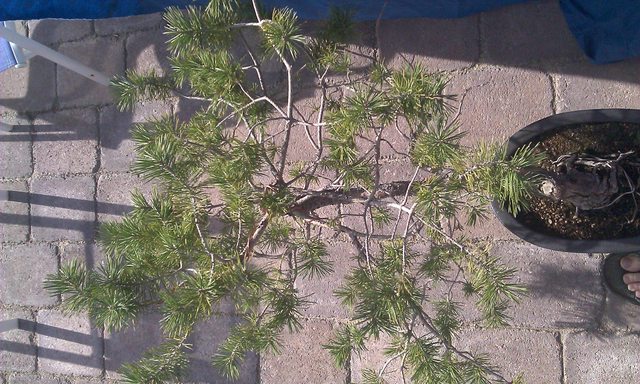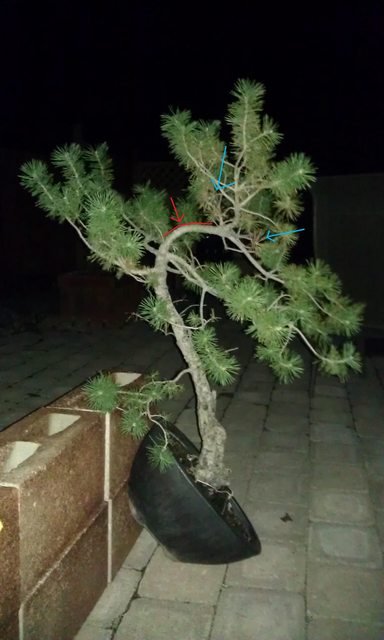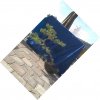Swill
Sapling
Is this a scotch pine? I got it at a bonsai auction in 2011 and haven't really touched it since. It backbudded pretty well this year but the foliage is still pretty far from the trunk on several branches. The branches basically all come from two whorls and I'm worried if I reduce to a single branch at each whorl the tree will look very sparse, particularly on the left side.
The front (click images for larger versions):

The first whorl:

The second whorl:

From above:

The back:

A quick virtual image. Some of the foliage left in the image might belong to branches that no longer exist. I don't really know how to graft so I feel like that's kind of a long shot so if there is a good alternative I would like to hear it:

The front (click images for larger versions):

The first whorl:

The second whorl:

From above:

The back:

A quick virtual image. Some of the foliage left in the image might belong to branches that no longer exist. I don't really know how to graft so I feel like that's kind of a long shot so if there is a good alternative I would like to hear it:






